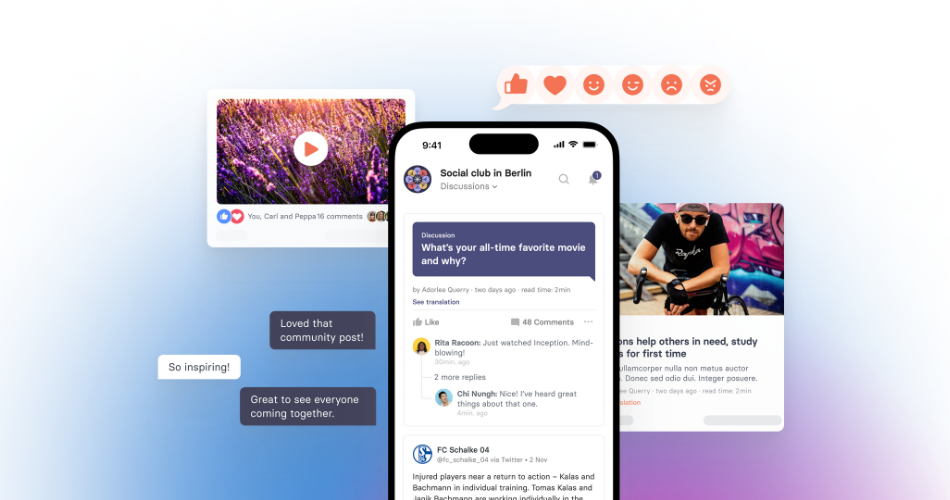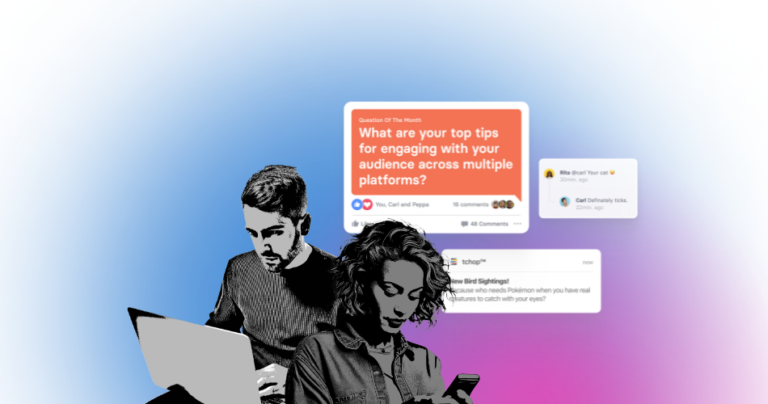The modern news consumer is overwhelmed, distracted, and selective. They are bombarded with information from all angles – social media, email newsletters, push notifications, podcasts, and traditional media.
Yet, in this chaotic digital landscape, some news apps manage to become essential daily habits.
How do they do it?
The answer isn’t just good journalism. It’s about precision in experience design, behavioural psychology, and engagement mechanics. A convergence of product strategy and audience intelligence.
We’re going deep into what actually makes a news app addictive, indispensable and irreplaceable. If you’re serious about building a product that readers rely on, this is the framework you need.
1. The retention problem: why most news apps fail to engage
Let’s start with the cold reality:
Airship, Mobile App Retention Benchmark Report 2023
This means:
- If you acquire 100,000 users this month, fewer than 11,000 will still be active by next month.
- If you rely on a paywall model, you’re losing subscription revenue before it even begins.
The real problem isn’t the lack of interest in news.
People still spend an average of 70 minutes per day consuming digital news.
Reuters Digital News Report 2023
The issue is that news apps aren’t built to retain users in the way that entertainment, gaming or social platforms are.
What drives app stickiness?
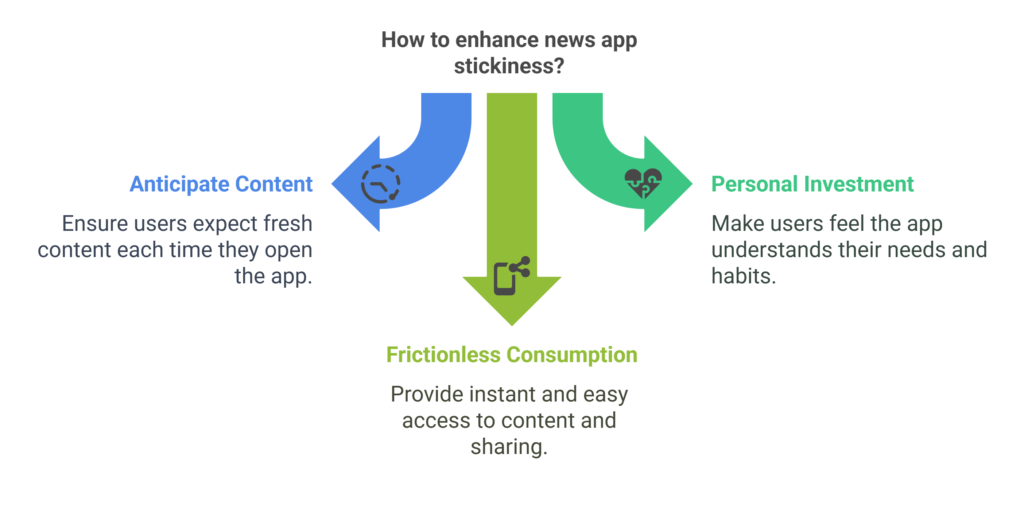
Retention-driven design isn’t just about sending push notifications or simplifying UI. It’s about understanding habit formation, dopamine loops and personalization mechanics.
Apps that retain users well (whether it’s TikTok, Spotify or Reddit) leverage three psychological triggers:
- Anticipation of new, relevant content (users should expect something fresh every time they open the app).
- A sense of personal investment (users feel like the app understands their needs and habits).
- Frictionless consumption & participation (news is instantly available, easy to engage with and even easier to share).
If your news app isn’t designed with these principles in mind, it will never become a daily habit.
2. Content design: news personalization beyond algorithms
Every news app talks about personalization, but most fail at delivering real, meaningful customization.
What doesn’t work
- Over-relying on algorithmic recommendations: If you’re just using a generic ML-based “trending articles” system, you’re creating a filter bubble.
- Static topic-based preferences: Letting users pick broad categories like “Politics” or “Technology” on first-time setup isn’t real personalization.
What actually works
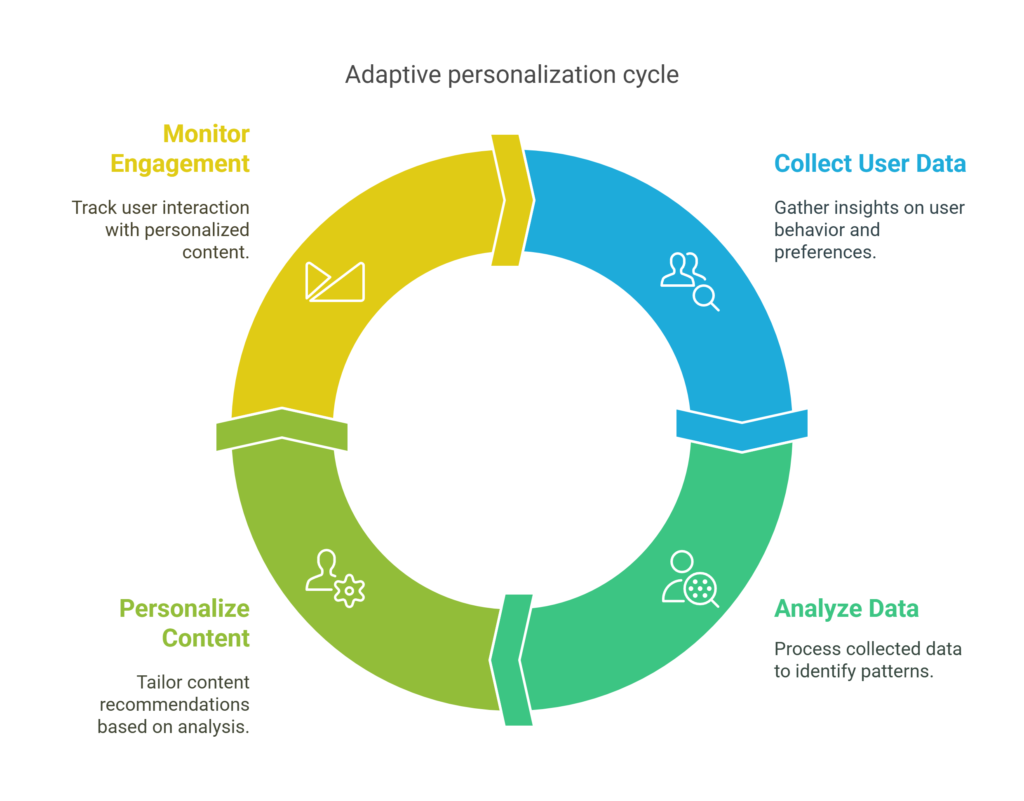
- Adaptive user modelling: Instead of static preferences, your app should continuously learn from behaviour. The best personalization engines consider:
- Time-based consumption habits (Do they read news in the morning vs. evening? Do they prefer long reads at night?)
- Engagement patterns (Do they finish full articles? Do they prefer visual over text-heavy content?)
- Social sharing tendencies (Do they share opinion pieces more than breaking news?)
- Predictive content surfacing: Instead of a home feed that just shows the latest articles, an engaging news app pre-empts user intent. Think of Spotify’s Discover Weekly. Your app should recommend articles based on:
- What similar users are reading.
- What’s gaining momentum in their preferred verticals.
- Articles from their favourite authors/journalists.
Example: The BBC app integrates AI-driven personalization, but its success comes from balancing algorithmic suggestions with editorial curation. This hybrid approach ensures that users see stories that matter, not just ones that confirm their biases.
3. The UX principles that create habit loops
Designing a great news app isn’t just about making it “pretty.” The real challenge is designing for habit formation.
The 4 pillars of habit-forming UX:
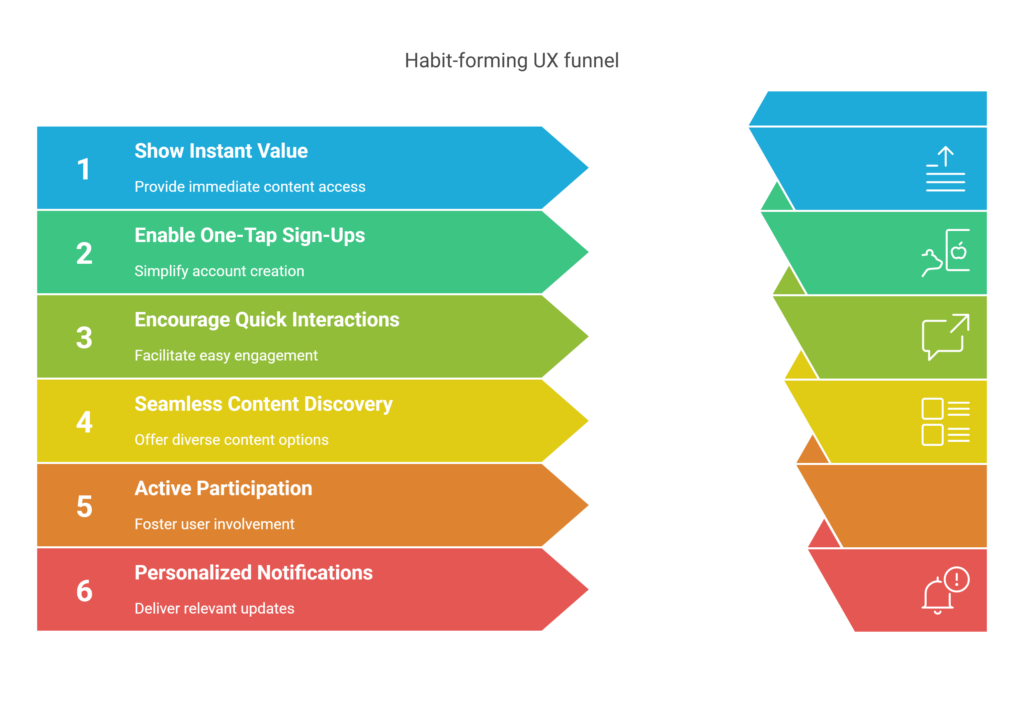
1. Frictionless onboarding:
If users have to “set up preferences” before they even see content, you’ve lost them. The best onboarding flows:
- Show instant value (e.g., “Here’s today’s top story”).
- Allow one-tap sign-ups (Apple ID, Google login).
- Encourage quick interactions (like tapping “Follow” on topics, not manually selecting them).
Example: The New York Times app keeps onboarding to under 30 seconds by guiding users straight into content discovery.
2. Seamless content discovery:
Most news apps rely on endless scrolling. Instead, think modular layouts that let users choose:
- Short form (quick summaries).
- Long form (deep dives).
- Multimedia (podcasts, video, interactive data).
Example: Quartz redesigned its app to be more like a messaging interface, where news is delivered in bite-sized chat bubbles. A format users are already familiar with.
3. Active participation & contribution:
Engagement isn’t just about reading. It’s about feeling involved.
- Can users comment in meaningful ways?
- Can they bookmark articles into personalized lists?
- Can they get a weekly recap of what they read?
Example: Apple News+ lets users “Follow” specific topics, authors, and magazines, creating a news feed that evolves based on real user intent.
4. Push notification strategy done right:
90% of news apps spam users with generic notifications. The best apps send notifications that feel essential:
- “Breaking: New policy announcement affecting your region.”
- “The story you were following just got updated.”
- “Your favourite columnist just published a new piece.”
Example: The Economist uses personalized push recommendations based on article read history, keeping its notifications highly relevant.
4. The monetization trap: subscriptions vs. engagement
The biggest mistake news apps make? Prioritizing monetization before engagement.
The data is clear:
- 60% of users abandon paywalled content immediately.
- Users are willing to pay for news, but only after repeated value experiences.
How successful news apps convert free users into subscribers:

- Freemium model with time-based paywalls (e.g., 5 free articles/month).
- Value-driven nudges (“Unlock in-depth analysis on this topic with a premium account”).
- Member perks that feel exclusive (behind-the-scenes newsletters, live Q&A with journalists).
Example: The Guardian’s voluntary membership model works because it frames subscriptions as a cause, not a purchase.
Takeaway
If you want to design a news app that people can’t put down, you need to think beyond “content delivery.” You’re building a behavioural ecosystem. One that integrates psychology, personalization, habit loops and community engagement.
In an era where readers can get headlines from anywhere, the real differentiator is experience.
How tchop™ supports this kind of experience
If you’re rethinking how your news app engages readers. Whether you’re a major publisher or a local newsroom, tchop™ provides the infrastructure to put these principles into action.
Here’s how:
- Modular content feeds: tchop lets you structure content using modular “cards” and “mixes,” allowing you to combine short-form, long-form, audio, video and even social content – all in one native mobile app.
- Real-time personalisation: Built-in tagging and targeting features let you deliver content tailored to user groups, regions or interests. Without relying entirely on opaque algorithms.
- Push notifications that convert: You can send highly targeted push notifications based on user roles or topics they follow, boosting relevance and engagement.
- Social layer built-in: With native comment threads, likes, polls and user-generated content capabilities, tchop™ turns passive readers into active community participants.
- Branded experience, full control: Your app stays your own. tchop™ powers the backend, while you maintain full brand, data and editorial control.
In short: tchop™ helps you create a news app that doesn’t just inform. It connects, engages and retains.
If you’re serious about designing a news product that earns daily attention, tchop™ offers the foundation to build it fast, flexibly and without compromise.


